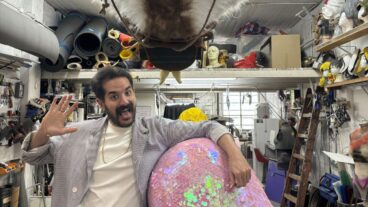Dr. Tal Friedman: We took an objective point of view, which included studying public records and his style of painting.If she had not devoted her life to plastic surgery, Dr. Tal Friedman says she would have become an artist.
“I was always painting and drawing, and looking to make the connection between my work and realism artists like Rembrandt and da Vinci,” says Friedman, who practices at Assaf Harofe Medical Center in Tel Aviv.
The Tel Aviv University Sackler School of Medicine lecturer recently collaborated with a multi-disciplinary team from the medical and museum worlds to develop a new scientific technique that seeks to understand the aging process. Dr. Friedman’s dual interest in art and science led to the selection of their first human experimental subject: seventeenth-century Dutch painter Rembrandt von Rijn.
Her team applied their technique to 40 of the painter’s self-portraits from various periods of his life to retroactively diagnose Rembrandt’s cause of death, upon which there is much speculation. After analyzing the self-portraits in the most comprehensive manner known to date, the researchers concluded that the painter likely suffered from a mild form of depression, and not a serious disease as previously believed.
This concept of using art in palaeoepidemiology – the study of ancient diseases – resounds with the American medical community. Friedman has been chosen for a two-year fellowship in plastic surgery at Pittsburgh University in Pennsylvania, starting this August.
“Rembrandt’s self-portraits have never before been looked at by a plastic surgeon,” Friedman continues. “There have been so many publications trying to analyze his cause of death, but they do not present a complete picture about him and his work. We believe that Rembrandt manifested symptoms of depression, probably not a severe case, because he accepted a new commission not long before his death.”
Friedman’s multi-disciplinary approach found her working with a team in both medicine and the arts. “We took an objective point of view, which included studying public records and his style of painting,” she noted.
Her team comprised two Sackler School of Medicine physicians: Dr. Ahuva Golik, a specialist in internal medicine, and Dr. Melvyn Westreich from the Sackler School’s Department of Plastic Surgery; and museum curator Doron Lurie, from the Tel Aviv Museum.
Using their collective experience, Friedman’s team developed a tool with which they could extrapolate information from peoples’ facial features as they change over time. The team found a way to understand aging and illness as it appears on facial features by studying the way the shape of the brow changes over time and when under duress.
Friedman’s landmark study (published this year by the Israel Medical Association Journal) has important implications for both science and art. Some unconventional methodologies used in the research can be applied to the growing movement of holistic medicine, which takes into effect a person’s complete environment when diagnosing a disease. These methodologies can also be used to effectively determine the authenticity of a work of art, especially in the case where historical self-portraits are in question.
It is also possible, Friedman’s team believes, that Rembrandt may have suffered from chronic lead poisoning – a common condition at the time, since lead was widely used in oil paints.![]()












